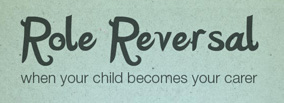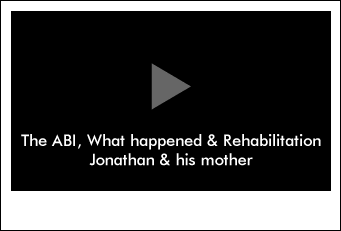- SELF STUDY MODULES
- 1. Intro to TBI
- 2. Communication
- 3. Skills for independence
- 4. Cognitive changes
- 5. Behaviour changes
- 6. Sexuality
- 7. Case management (BIR)
- 8. No longer available
- 9. Mobility & motor control
- 10. Mental health & TBI:
an introduction - 11. Mental health problems
and TBI: diagnosis
& management - 12. Working with Families
after Traumatic Injury:
An Introduction - 13. Goal setting
- 12.0 Aims
- 12.0A Take the PRE-Test
- 12.1 Why is working with families important
- 12.2 What is the adjustment experience for families
- a) The journey
- b) The challenges
- 12.3 Principles and skills
- a) Partnering
- b) Whole of family
- c) Family reactions
- d) Respect
- e) Empowering
- 12.4 When to get help
- 12.5 Take home messages
- 12.6 Resources
- 12.7 Take the POST-Test
12.3b Principles and skills: Whole of family
- i) Principle: Being whole
of family minded - ii) The whole
family Q - iii) Cheryl Video
Family members - iv) Dealing
with conflict - v) Strategies
for conflict Q

Principle: Being “whole of family” minded
A traumatic injury doesn’t just happen to an individual, but to a family system.
Being ‘whole of family minded’ is another way of saying that we treat traumatic injury as happening to the whole family system.
Everyone within this system is affected in some way by the injury. Different family members will have different needs in their ability to understand what has happened, depending on their age and how close they were to their injured relative. Traumatic injury can affect the roles family members carry out, the interactions that they have with each other, and the expectations and beliefs they hold. Each member of the family system may cope differently with the distress and adjust/adapt to the changes at a different pace and in different ways.
The whole family
Here is the who's who for the three families you have been introduced to in this module.
Angela and her husband. Steven who has the injury has an older brother and two younger sisters.
Cheryl is the wife of Peter who had the Spinal Cord injury. Cheryl and Peter have two adult children.
Jonathan, his mother, his father, his brother.
Each of the people describes the impact on the family system in one of their video clips. The video clips highlight some aspects of the family systems. It is useful to make family systems and dynamics explicit when working with families.
Thinking about these families
Think about the different people in these three families. Cheryl is a spouse of an injured partner. Cheryl and Peter have two children who were teenagers at the time of his spinal injury. Angela and her husband were parents of Steven who was a teenager. Steven had two younger sisters who were under 10 years of age at the time of his injury. Jonathan also had a brother as well as his parents.
Being ‘whole of family minded means appreciating that the whole family is affected when a relative sustains a traumatic injury:
(i) different members of the family will have a different understanding and different information needs about the traumatic injury based on their age and their relationship to the relative who was injured;
(ii) each member of the family has a different set of roles and relationships with the other family members which are changed by the impact of the injury; and that
(iii) each member of the family will have a different way of coping and different support needs based on their age and their relationship to the relative who was injured.
So when thinking about families it is useful to think about:
(i) The information needs of siblings who are still children, siblings who are adolescents, of frail-aged grandparents, of adult children, of parents, of spouses, and of friends. How will they learn about the injury? How much do they need to know? What is the best way to communicate this information? Who is best situated to do this? What support might family members need to be able to communicate effectively about the injury and its’ consequences to other members of the family? How can we support this process over time as things change and evolve?
(ii) The different roles/relationships among family members.
(iii) The different coping responses and support needs for family members of different ages and relationships to the relative who has been injured.
Thinking about a client of yours
Think of a client you have recently worked with (or use the example of Angela, Cheryl or Jonathan's mother).
Write down, or map, all the family members you know of within this family system.
Do you notice any patterns within this family system? E.g.
Who holds the power?
Who is the spokesperson?
Who is the quiet one?
Who just gets on with the job?
Who's the joker?
Who takes on responsibility for others?
What roles does each family member take on?
How involved has the team been with all the members of this family system?
Think about each person in turn.
i) What is their understanding about the injury? How would they find out? What would it be important for them to understand? What do they need to understand about your role? How would you communicate this to different members of the family?
ii) What type of role changes have they experienced? How have their relationships with other members of the family been changed?
iii) How would they cope with the changes? How could they be supported through this process? In the context of your role, how would you be able to contribute to this support?
Rate your work with this client?
How could the work with this client be improved if a "Whole of family" approach was used?

The impact on the whole family (1 min 23 sec)
Cheryl talks about the impact on her family.
The video may take a few moments to load. .
What changes occurred in the family system?
- What different coping reactions did Cheryl, her daughter Rachel and her son James display?
- How has Peter’s spinal injury changed the relationships between the family members?
How would you communicate your role in working with Cheryl’s husband to Cheryl? To the two children?
FAMILY SYSTEM CHANGES
What different coping reactions did Cheryl, her daughter Rachel and her son James display?
Cheryl
- trying to keep things as "normal" as possible
- adjusting to changes in her children's priorities and viewing them in a positive light
Rachel
- Distancing herself - spending time elsewhere (study, with friends)
James
- Throwing himself into his studies
How has Peter's spinal injury changed the relationship between family members?
- For all - Adjustment to new roles and priorities
- For Cheryl - allowing her children to cope with Peter's injury in different ways and providing them with the space to do so
COMMUNICATING YOUR ROLE
How would you communicate your role in working with Cheryl's husband to Cheryl?
- Acknowledge that a traumatic injury affects everyone in the family
- Reinforce that information provided by Cheryl will be very valuable to your work with Peter
- Inform Cheryl that support for all family members is available from either yourself or others on the staff team as required
- Encourage questions
To the two children?
- Provide your contact details and explain that you are available to all family members should they wish to discuss any concerns or questions regarding your work with Peter
- Join Cheryl in seeking a positive outlook regarding the changes which are occurring within the family, as appropriate
- Provide information and support as required (or refer to other staff as appropriate, for e.g.Social Worker)
- Reassure family members that not everyone may wish to be involved in family discussions, and that their choice on this matter will be respected
Dealing with conflict

One of the most challenging aspects of our work with families can be dealing with families who are in conflict, when the family system is out of balance.
There are all sorts of reasons why family members are in conflict.
Some common reasons are:
- disputes about who should be the decision maker
- family members disliking each other
- family members suspicious of each others’ behaviour (i.e. accusation of misuse of finances)
- history of long standing conflict within the family
- parents of injured person have separated or divorced
Dealing with conflict is difficult for a service provider because often a relationship is formed with both the injured person and their family.
Staff ideally want to be able to maintain positive relationships with everyone in the family system. This can be hard to achieve. Family members may try to encourage staff to take sides.
Sometimes staff can relate to a client’s situation or have empathy with them, especially if they are caught in the middle of a family conflict situation. Like in every family, there are different sides of the story depending on who you speak to.
It is important for staff to stay neutral and avoid over identifying with a particular family member, and instead keep the focus of everyone on the person with the injury.
Strategies to help manage family conflict
Remember that the goal is not to solve the conflict, but to manage it in such a way so family resources can be used to the benefit of the person with the injury.
Stay Neutral
- You can maintain neutrality in a situation by providing the same information to all people involved, not taking sides, clearly defining your role and remaining calm
Decline/deflect invitations to join sides
- Redirect or deflect attention back to person with the injury
- Manage invitations to give opinions by repeating simple statements like ‘I’m here to do therapy with ……./ or help……….. with the laundry. I’m sorry things have been stressful for you but I really need to get on with what I’m here to do.
Avoid team division
- Be clear about team member roles
- Maintain clear communication in all interactions
- Close co-operation between team members, communicate issues and concerns with each other, where possible all should agree on a treatment approach to avoid team splitting
Don’t give an opinion
- It is not your role to fix or provide a view on who is at fault/not at fault
Determine who has the legal right
- In the case when families are providing conflicting directions or requests, the first step is to listen to the person with the injury and develop an understanding of their opinions and preferences
- In cases where the person with the injury is severely cognitively impaired and is not able to make key decisions, then it is important to ascertain who has the legal right to make decisions on behalf of the client
- However, it is still important to try and keep avenues open with all key family members who have a role in the life of your client.
Consider whether an umpire is needed?
- Consider Guardianship Tribunal involvement if conflict cannot be resolved

